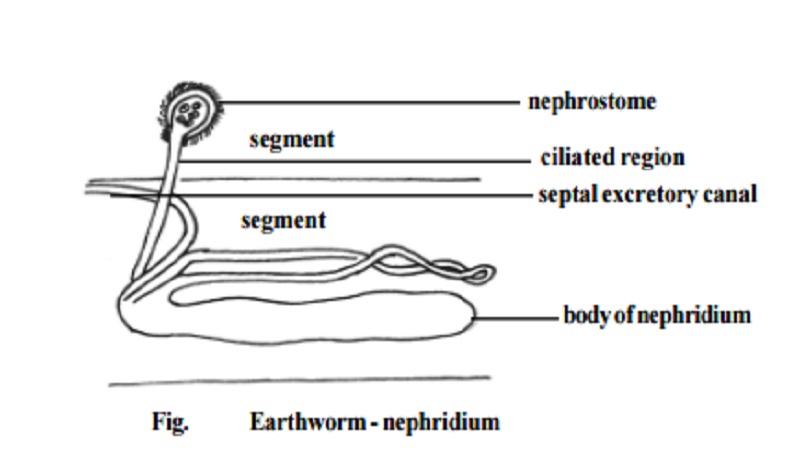Chapter: BIOLOGY (ZOOLOGY) Standard XI first year 11th text book Assignment topics question and answer Explanation Definition
Earthworm : Excretory System

Earthworm - Excretory System
Earthworm
Phylum - Annelida
Class - Chaetopoda
Order - Oligochaeta
Type - Lampito mauritii
Earthworms are nocturnal animals. They lie in the burrows during the day and come out at night for food. Earthworms leave the burrow only during the rainy season when their burrows are flooded with water.
Excretory System :
Excretion is the process of elimination of metabolic waste products from the body. In earthworm, excretion is effected by minute paired tubes callednephridia. These are found, one pair, in each segment.
A typical nephridium has an internal funnel like opening called the nephrostome. It is fully ciliated. The nephrostome is in one segment and therest of the tube will be in the succeeding segment. This tube has three distinct
divisions. The first part following the nephrostome is ciliated inside. This is called the ciliated region. The next part is wider and is thrown into coils. This part has glands on its wall.It is called the glandular region. The last part has neither cilia nor glands. It is called the muscular region. This region opens outside by an aperture called the nephridiopore. The waste material is collected from the body cavity by the ciliated funnel. The ciliated region pushes the waste into the nephridium. The glandular part extracts waste from the blood and add it on to the waste inside. Finally the waste goes out through the nephridiopore.
In the South Indian earthworm, Megascolex, there are certain modifi-cations. There are three types of nephridia in the megascolex. They are : (i). Meganephridia, (ii). micronephridia, (iii). Pharyngeal nephridia.
Besides nephridia there are some special cells on the wall of the intes-tine called Chlorogogen cells. They collect the waste and then drop down into the body cavity. These are then sent out through nephridia.
Related Topics